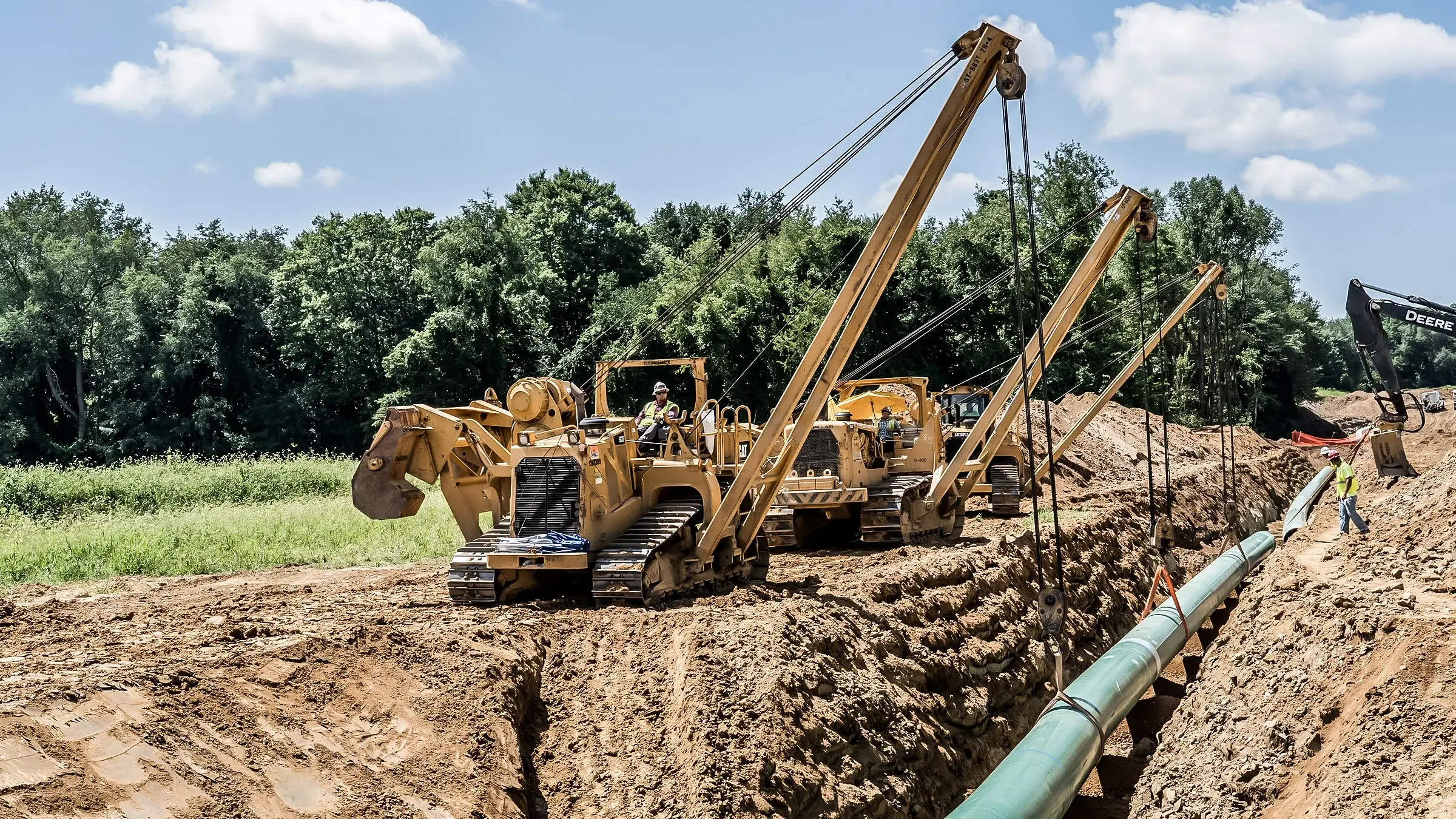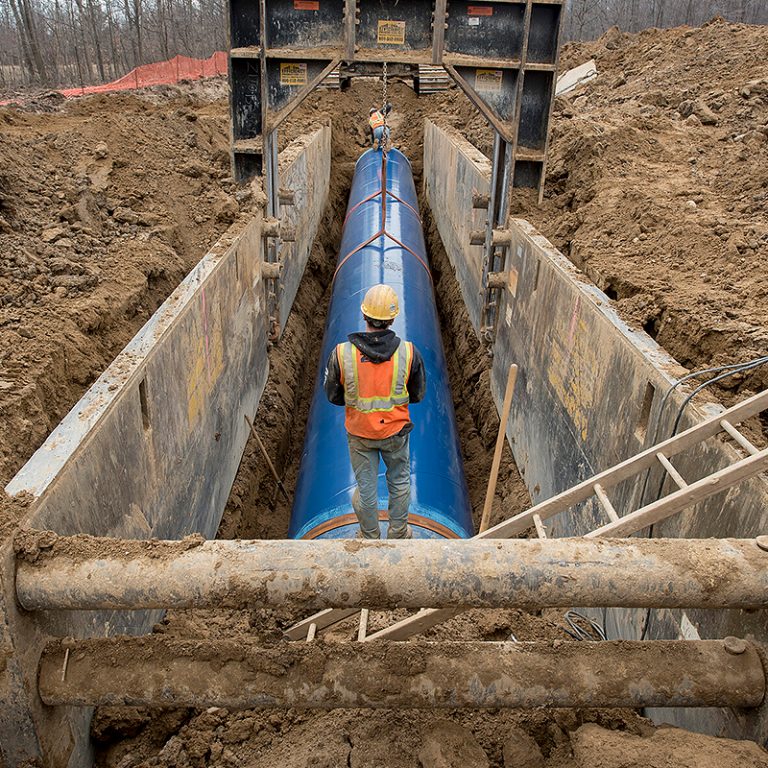What Affects Your System’s Lifespan? Insights From Creek Pipe HDPE installation
Understanding the Fundamentals of Pipes Installation: What You Need to Find Out About the Process
Correct pipe installation is essential for any plumbing system. It needs cautious consideration of various factors, consisting of product selection and adherence to neighborhood guidelines. A well-planned layout can prevent concerns like pressure loss, while the right devices ensure effective joining strategies. Nevertheless, also experienced installers can make usual mistakes. Understanding these fundamentals can bring about a much more effective and long lasting system, motivating a closer look at the crucial aspects associated with the procedure.
Selecting the Right Materials for Pipe Installation
When taking into consideration pipe installation, the selection of suitable materials is vital to making certain sturdiness and functionality. Numerous materials are available, each offering distinct benefits and considerations. PVC pipes are lightweight, immune to deterioration, and cost-efficient, making them optimal for property plumbing. Conversely, copper pipes, recognized for their long life and capacity to endure heats, are frequently liked for heating systems.Additionally, galvanized steel pipelines supply toughness and sturdiness, ideal for sturdy applications, although they are susceptible to corrosion over time.For underground setups, polyethylene pipes are preferred because of their flexibility and resistance to stress and anxiety breaking. Proper product choice depends on the details requirements of the project, consisting of pressure rankings, temperature level variants, and the chemical nature of the fluids being delivered - Creek Pipe contact. Inevitably, educated selections concerning pipe materials contribute substantially to the general success and long life of plumbing systems
Comprehending Local Building Codes and Laws
How can recognizing local building ordinance and regulations impact pipe installation? Experience with these codes is vital for making certain that pipe installments are secure, certified, and efficient. Neighborhood building ordinance detail certain requirements pertaining to products, installation strategies, and safety actions, which have to be stuck to in order to avoid possible lawful concerns and costly fines.Failure to abide can bring about inspections being failed, hold-ups in task completion, or perhaps mandated elimination of improperly set up pipes. On top of that, understanding zoning laws and guidelines can influence the sort of materials enabled, as well as the methods used for installation.Contractors and property owners alike should invest time in reviewing local guidelines prior to beginning any kind of installation job. This aggressive strategy not only advertises safety and security yet additionally improves the total quality and toughness of the plumbing system, ultimately fostering long-lasting capability and contentment.
Preparation Your Pipe Layout and Style
Appropriate planning of pipe format and design is crucial for attaining an efficient pipes system. This process begins with evaluating the specific requirements of the room, thinking about the place of components and home appliances. Exact dimensions ensure that pipelines are properly directed, reducing bends and turns that can bring about press loss.Consideration of the flow prices and the kinds of products made use of is important, as various materials have differing sturdiness and compatibility with plumbing systems. Furthermore, the developer should make up future growths or alterations to the layout, permitting for flexibility in instance of renovations.Efficient water drainage and ventilation are likewise substantial components of the style, as they protect against clogs and ensure correct waste removal. Partnership with local structure codes assures compliance and security, which is critical in any kind of plumbing installation job.
Essential Tools and Equipment for Installation
Effective pipe installation hinges on having the right devices and equipment at hand. Crucial devices consist of pipe cutters for tidy cuts, wrenches for tightening installations, and pliers for clutching and transforming pipes. In addition, a level assurances pipes are set up uniformly, while a measuring tape help in attaining specific lengths.For specific products, a soldering iron might be necessary for copper pipes, while a PVC cutter is vital for plastic choices. Safety and security devices, such as handwear covers and goggles, safeguards installers from potential dangers during the process.A pipeline bender can be specifically beneficial for producing smooth curves without endangering honesty, while a torque wrench assurances that connections are protected to the supplier's specifications.Having these tools easily offered not just facilitates a smoother installation process but additionally adds to the general sturdiness and capability of the pipes system. Proper tools is essential in achieving resilient results.
Methods for Proper Pipe Signing Up With and Securing
Accomplishing a secure and leak-free link between pipelines needs cautious interest to joining and securing methods. Various methods exist, each suited to various pipe materials and applications (Creek Pipe Midland). For example, welding is often utilized for metal pipes, making certain robust connections with warm fusion. On the other hand, plastic pipes benefit from solvent cement or combination welding, creating strong, long-term bonds.Threaded links prevail in both metal and plastic piping, calling for specific placement and the use of suitable sealants, such as Teflon tape or pipe dope, to avoid leaks. Compression fittings provide one more alternative, where mechanical pressure safeguards the pipelines with each other, making them easily dismantled for maintenance.Regardless of the approach picked, correct prep work is important. This consists of cleaning pipe finishes and ensuring they are totally free from particles. Implementing these techniques carefully will boost the longevity and reliability of the pipe system, inevitably adding to its efficient efficiency
Typical Errors to Avoid Throughout Installation
Throughout pipe installation, preventing usual mistakes is important for making sure a trustworthy and effective system. One regular mistake is falling short to measure and reduce pipelines precisely, which can cause inappropriate installations and leakages. Additionally, ignoring to check the compatibility of products can cause corrosion or other damage with time. Incorrectly securing joints and connections can likewise produce powerlessness in the system, creating prospective failures.Another common blunder is overlooking the relevance of slope and drainage; pipes should be imp source installed at the appropriate angle to help with proper circulation. Insufficient support for pipes can result in drooping and tension, affecting the honesty of the system. Eventually, overlooking local codes and guidelines can lead to pricey rework and safety risks. By being mindful of these mistakes, installers can substantially boost go to this web-site the sturdiness and efficiency of pipe systems.
Maintenance Tips for Durable Pipe Systems
To assure the long life of pipe systems, regular examinations and cleaning are crucial methods. These measures assist recognize potential issues prior to they rise right into significant issues. In addition, utilizing appropriate insulation methods can better protect pipelines from temperature fluctuations and ecological aspects.
Regular Evaluations and Cleaning
Routine inspections and cleansing are vital for preserving the durability and effectiveness of pipe systems. On a regular basis checking out pipes for indicators of corrosion, leakages, or obstructions can aid determine prospective issues prior to they rise right into pricey repairs. Cleaning up pipelines regularly removes build-up that can restrict circulation and advertise deterioration. It is recommended to schedule assessments at least when a year, but more constant checks may be required in high-usage environments. Making use of expert services for extensive cleansing warranties that all debris is efficiently removed. Furthermore, keeping records of inspections and upkeep activities aids in tracking the system's health and wellness gradually - Creek Pipe HDPE installation. By prioritizing these methods, home proprietors can boost the reliability and life expectancy of their pipe systems
Correct Insulation Strategies
Efficient insulation methods play a crucial duty in preserving the efficiency and longevity of pipe systems. Proper insulation reduces warm loss in hot water pipes and prevents cold in cool water pipes, significantly minimizing energy costs and prospective damage. Typical materials used for insulation consist of fiberglass, foam, and rubber, each offering varying levels of thermal resistance. It is crucial to assure that insulation is applied evenly, covering all subjected locations without spaces. In addition, protecting insulation with proper fasteners helps preserve its placement and effectiveness over time. Routine assessments must be performed to identify deterioration, assuring timely substitutes. By carrying out these strategies, pipe systems can operate effectively and have an extensive life span, inevitably profiting both the environment and the property owner.

Frequently Asked Questions
How Do I Identify the Appropriate Pipe Size for My Job?
Determining the suitable pipe size includes assessing the task's flow needs, stress requirements, and the kind of fluid being moved. Consulting style criteria and carrying out computations warranties ideal efficiency and performance in the installation process.
What Are the Environmental Effects of Different Pipe Materials?

Can I Install Pipes Myself or Should I Hire a Specialist?
The concern of whether to set up pipes individually or work with a specialist often relies link on the person's ability level and project intricacy. A professional might guarantee compliance with laws and decrease possible long-lasting issues.

The Length Of Time Can I Expect My Pipe Installation to Last?
The long life of pipe installation differs substantially, commonly lasting 20 to 100 years, relying on products, installation high quality, and maintenance. Routine evaluations and proper treatment can improve longevity and stop premature failures.

What Are the Signs of a Failing Pipe System?
Signs of a stopping working pipe system include constant leakages, unusual water pressure changes, tarnished water, mold and mildew development, and consistent wetness. House owners must keep track of these indicators to stay clear of expensive damage and guarantee prompt fixings are made.